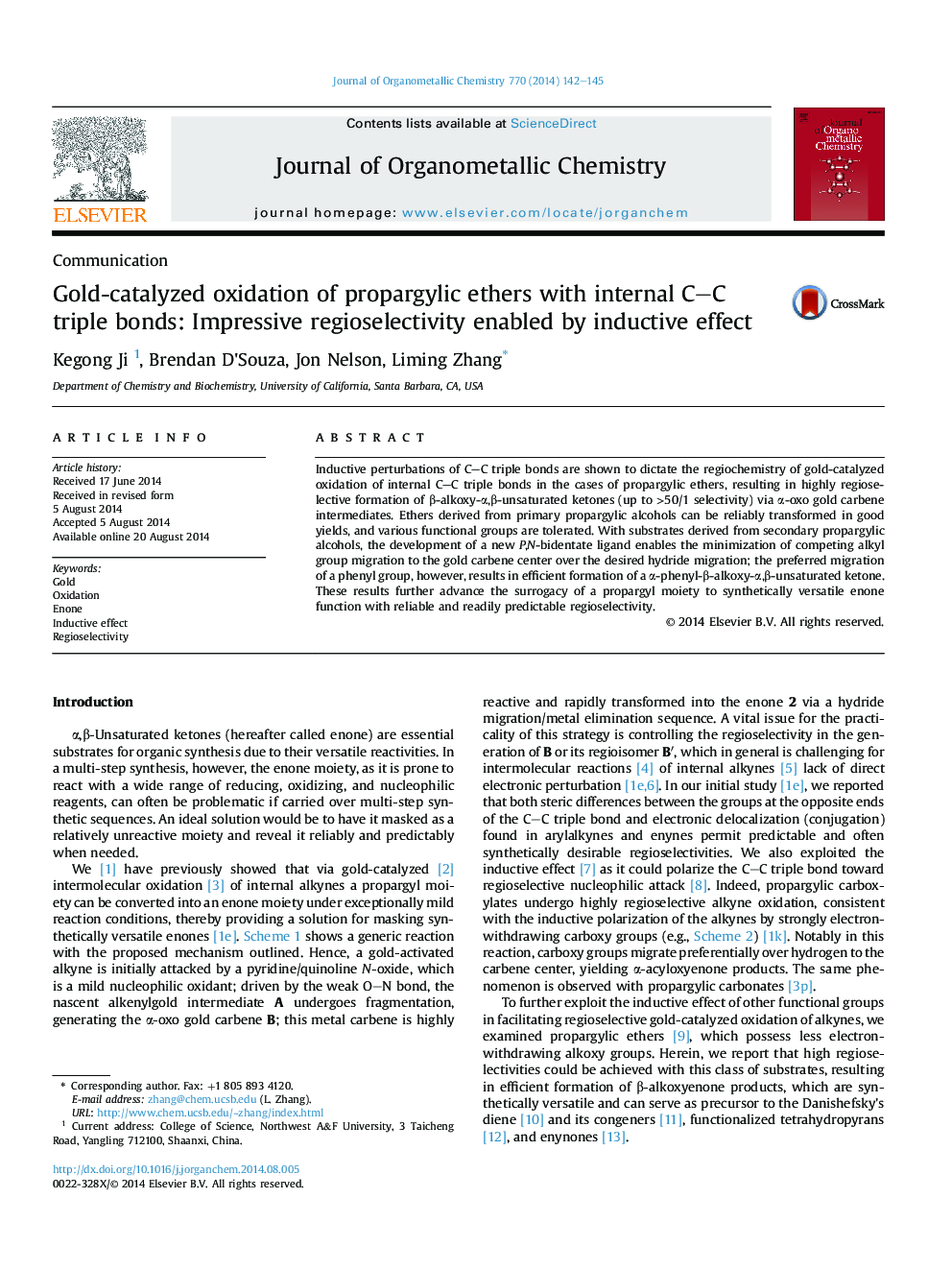| Article ID | Journal | Published Year | Pages | File Type |
|---|---|---|---|---|
| 1323640 | Journal of Organometallic Chemistry | 2014 | 4 Pages |
•Inductive perturbation of C–C triple bond permits its regioselective oxidation.•Regioselectivities up to >50/1 are achieved.•Propargylic ethers are converted into β-alkoxy-enones reliably in good yields.•A new P,N-bidentate ligand enables selective hydride migration.
Inductive perturbations of C–C triple bonds are shown to dictate the regiochemistry of gold-catalyzed oxidation of internal C–C triple bonds in the cases of propargylic ethers, resulting in highly regioselective formation of β-alkoxy-α,β-unsaturated ketones (up to >50/1 selectivity) via α-oxo gold carbene intermediates. Ethers derived from primary propargylic alcohols can be reliably transformed in good yields, and various functional groups are tolerated. With substrates derived from secondary propargylic alcohols, the development of a new P,N-bidentate ligand enables the minimization of competing alkyl group migration to the gold carbene center over the desired hydride migration; the preferred migration of a phenyl group, however, results in efficient formation of a α-phenyl-β-alkoxy-α,β-unsaturated ketone. These results further advance the surrogacy of a propargyl moiety to synthetically versatile enone function with reliable and readily predictable regioselectivity.
Graphical abstractWhat an induction! Inductive perturbations of C–C triple bonds are shown to dictate the regiochemistry of gold-catalyzed oxidation of internal C–C triple bonds in the cases of propargylic ethers, resulting in highly regioselective formation of β-alkoxy-α,β-unsaturated ketones (up to >50/1 selectivity) via α-oxo gold carbene intermediates.Figure optionsDownload full-size imageDownload as PowerPoint slide
